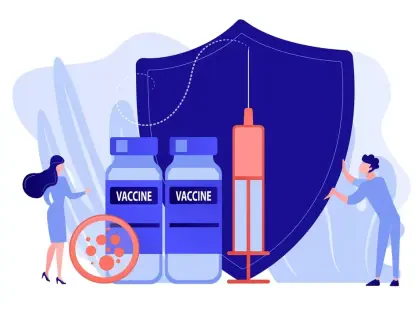Every check mailed late, every call unanswered, and every case reopened after churn signals a system stretched thin by design, not accident. The One Big Beautiful Bill Act forces a choice with real consequences: lean on federal oversight to set guardrails and build shared infrastructure, or lean on state administration to tailor operations to local realities; either way, the programs must work for families, providers, and taxpayers at the same time.
OBBA’s Realignment: Context, Purpose, and Relevance
OBBA rebalances responsibility by pushing day-to-day administration of SNAP and Medicaid to states and counties while keeping federal agencies in charge of standards, compliance, and integrity enforcement. The central shift is decentralized execution under centralized oversight, with stricter integrity rules, semi-annual Medicaid redeterminations, and a reduced federal share for SNAP administrative costs.
The law promises local control and speed but arrives amid capacity gaps that predate the change. It matters across SNAP, Medicaid, WIC, and TANF because the same households often touch multiple programs; choices about data, staffing, and process design ripple across the entire safety net. The comparison at hand tests whether federal oversight and state administration can complement rather than collide, and whether modernization and flexibility can turn a compliance mandate into better service.
Comparative Analysis of Oversight and Administration Under OBBA
Governance and Accountability Architecture
Federal agencies define standards, audit compliance, and set guardrails; states and counties design workflows, staff front doors, and make eligibility decisions. This split can work when expectations are clear and tools exist, but fray when federal requirements expand faster than local capacity or when guidance lands late.
Dual accountability gets stressed by semi-annual Medicaid redeterminations and tougher SNAP integrity rules. Without crisp federal playbooks, states interpret requirements unevenly, risking both over- and under-enforcement. With clear guidance and shared reference models, the compact tightens: oversight protects integrity while administration preserves access.
Funding, Incentives, and Performance Management
Fiscal flows cut in opposite directions: a lower federal SNAP administrative match meets rising workloads, and budget elasticity varies widely across jurisdictions. That mismatch can reward delay rather than accuracy if not corrected by outcome-based incentives that value timeliness, correctness, and beneficiary experience, not denial rates.
Better measurement is the hinge. Transparent reporting on timeliness, accuracy, satisfaction, and conflict-of-interest controls discourages gaming and encourages practical fixes. Bipartisan ideas, including proposals from Reps. Buddy Carter and Don Davis, point to codifying fair metrics so performance reflects eligibility and need instead of volume of rejections.
Operational Capacity, Technology, and Data Integration
Many eligibility systems remain antiquated, data is siloed, and vacancies stretch front-line teams. Integrated platforms, shared services, and modular components can reverse the trend, especially when federal standards define privacy, security, and ethics for new tools, including AI-enabled workflows.
Interoperability is the missing bridge. Standardized data fields, shared intake, and aligned renewals allow a determination in one program to inform another. National clearinghouses for SNAP and Medicaid can prevent duplicate enrollments, reconcile interstate moves, and strengthen provider screening, turning fragmented work into a coordinated flow.
Cross-Cutting Challenges, Limitations, and Practical Considerations
Workforce strain is acute: vacancy rates commonly sit between 15 and 30 percent while caseload complexity rises. Training pipelines, retention strategies, and surge staffing matter as much as policy; without them, redeterminations slip, documentation piles up, and eligible families fall through the cracks.
System fragmentation invites errors. Legacy IT, weak data sharing, and documentation gaps fuel improper payments and slow access. Equity risks grow when redeterminations become more frequent, rural bandwidth is thin, and one in five eligible households does not apply for SNAP. Tougher integrity rules, absent modern tools, expand compliance exposure and heighten conflict-of-interest and provider screening vulnerabilities.
Legal and ethical boundaries shape the path forward. Data privacy, interstate exchange rules, and AI oversight require uniform standards so innovation does not outpace safeguards. Guardrails should deter perverse incentives and ensure that metrics do not reward denial or churn masquerading as efficiency.
Synthesis, Recommendations, and Fit-for-Purpose Guidance
The evidence points to a simple truth: OBBA increases local administrative load while retaining federal accountability, so success hinges on federally led flexibility, standards, and infrastructure. Flexibility bounded by outcomes works best—grant process variation, contracted staffing, and private-sector partnerships, but pair them with transparent metrics and conflict-of-interest protections.
Action should follow a clear sequence. First, authorize structured flexibility for contracted personnel and AI adoption within federal privacy, security, and ethics constraints. Next, tie guardrails to outcomes—publish annual results on timeliness, accuracy, beneficiary experience, and conflict elimination, and shield against denial-driven metrics. Then, build integrated eligibility and case management with standardized data, shared intake, and aligned renewals across SNAP, Medicaid, WIC, and TANF. In parallel, accelerate national clearinghouses for SNAP and Medicaid, enforce participation timelines, and raise provider integrity checks. Finally, offer implementation support through technical assistance, shared services, modular components, and interagency coordination that harmonizes rules and timelines.
Fit-for-purpose guidance clarifies who leads which lever. Federal oversight is best for defining standards, setting data infrastructure, and enforcing performance guardrails. State administration is strongest when tailoring workflows to local capacity, integrating front doors, and experimenting with service delivery models that meet communities where they are. Paired together, decisive federal leadership on standards and infrastructure with empowered state execution safeguarded integrity, reduced improper payments, and improved timely access at scale.









